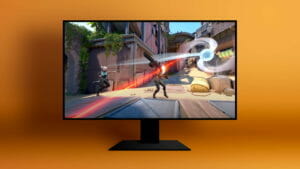Table of Contents
When looking for a gaming monitor, most people look for manufacturers' buzzwords for gaming monitors. Such words include high refresh rates, low input lag, a wider field of view, and high resolution. However, one essential feature of a gaming monitor that gaming enthusiasts overlook is the size of the screen.
The screen real estate is an essential factor, especially in competitive gaming. Most people will be using the screen for other purposes apart from gaming. Therefore, it's best to consider how else you intend to use the monitor when choosing the best monitor size.
Below are our recommendations for the best gaming monitor sizes.
What Monitor Size Is Best for Gaming?
When considering the best screen size for gaming, it's vital to look at the advantages and disadvantages of each. For instance, large 40-inch monitors offer you more display area. On the other hand, smaller gaming monitors also come with benefits. For example, it is more effortless to see everything on the screen, which is an advantage, especially in competitive gaming - see monitors for CS:GO.
Additionally, a smaller monitor size offers more pixel density, resulting in better clarity.
So, what monitor size is best for playing games, and which one offers a more immersive gaming experience?
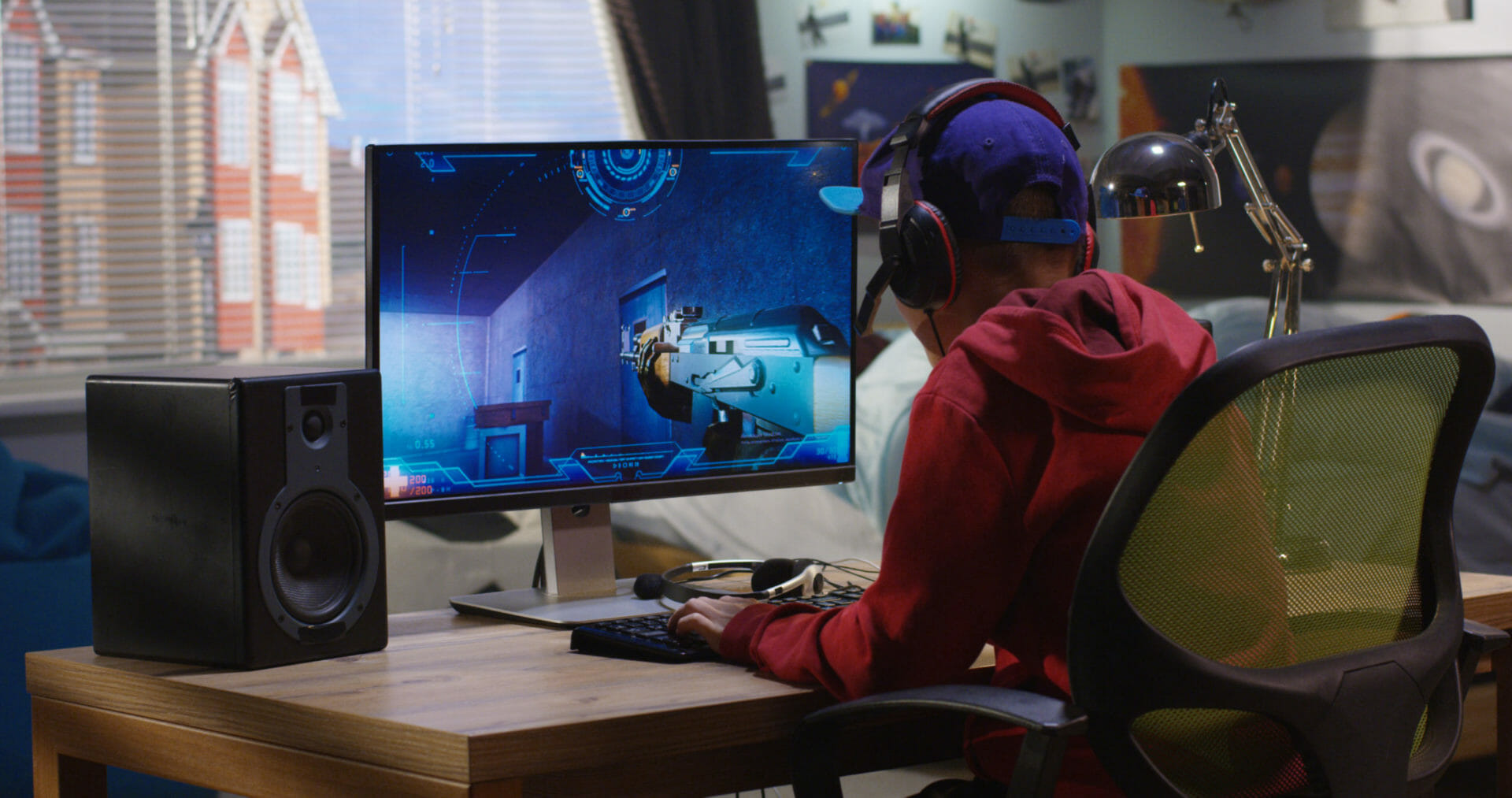
Is 24 or 27 an Excellent Choice for Gaming?
Larger-size monitors tend to be the most preferred monitors. The large screen size monitors are ideal as you can use them for other purposes such as watching movies or your favorite TV shows. However, a small monitor size for gaming, such as the 24 or 27-inch, is also advantageous.
The small screen space ensures you don't struggle to see the details on the screen, including maps. It enables you to concentrate better on the game and enjoy a lifelike gaming experience. The small screens are an excellent choice for fast-paced FPS games like Fortnite. However, they may not be the best for RPG games and more immersive adventures.
Furthermore, most small gaming monitor models feature a 1080p resolution that isn't too demanding on the graphics card. Best gaming monitors can support refresh rates as high as 360 Hz, resulting in a smooth gaming experience.
One disadvantage with the 24-inch monitors, or marginally bigger ones, is that you don't have enough space for enhanced productivity. You'll have challenges getting a split-screen for gaming with a friend or for multitasking.
Is a 27 or 32-inch Monitor Ideal for Gaming?
The 27 to 32-inch monitor models are the most popular. If you choose a 27 to a 32-inch monitor, you'll enjoy more screen space than their 24 and 25-inch counterparts, and you may not get the same picture clarity.
The models in this category have a 16:9 aspect ratio, and they come with a range of features such that everyone can get a monitor, irrespective of the games they play. Additionally, the models feature a 4k or 1440p resolution, enabling you to enjoy the best quality images. A few models in this category have 1080p resolution. The resolution is mainly on the budget monitors, with a low pixel density.
The 1440 models feature faster response time and high refresh rates, ensuring a smooth gaming experience. The models are a perfect choice for playing fast-paced games. Some 4k models with a high refresh rate are also available. However, they require you to do some high-end gaming setups to enjoy your gaming. The complex setups make people prefer the 1440p displays.
The low input lag of the models is a great advantage that ensures a smooth gaming experience.
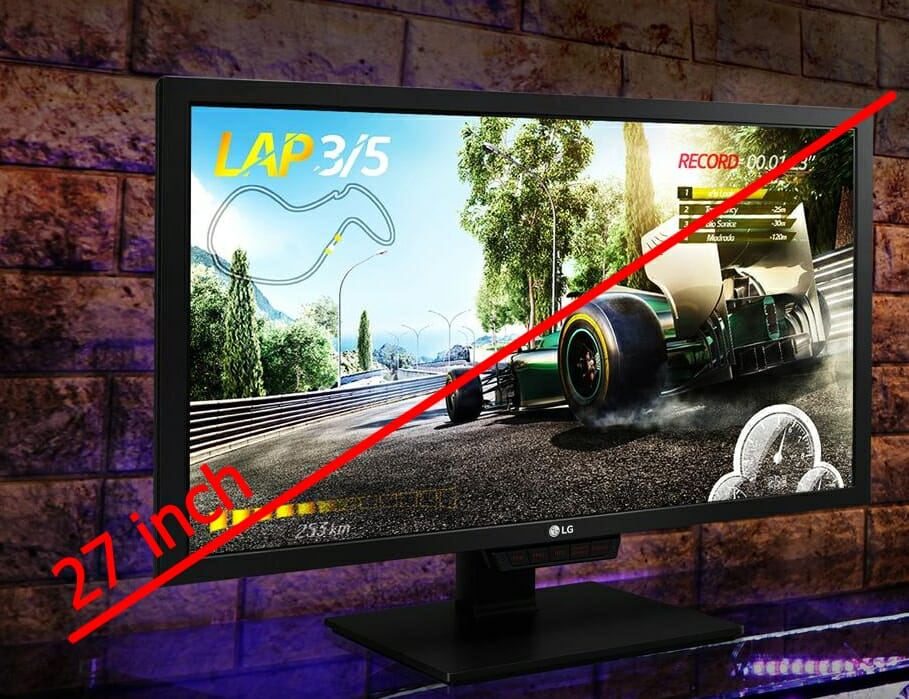
34 to 38 Inch Monitors
The 34 to 38-inch monitors are an excellent choice if looking for the most immersive gaming experience. The 34 to 38-inch monitor size might be the best for your gaming needs. 34-inch gaming monitors are more popular and the best choice for most gaming enthusiasts. However, you can also find 38-inch models that are more designed for productivity as you can split the screen and multitask.
The ultrawide monitors feature a 21:9 aspect ratio. The aspect ratio offers you 30% more horizontal space than you get with a 16:9 aspect ratio. Thus, the monitors offer you a wider field of view, allowing you to split-screen and even have multiple players participating in the game.
Although the 21:9 aspect ratio offers you a wider field of view, it is more demanding on your monitor's graphics card than a 16:9 aspect ratio of the same resolution. The 21:9 aspect ratio has more pixels to push, which is a heavier load for the graphics card.
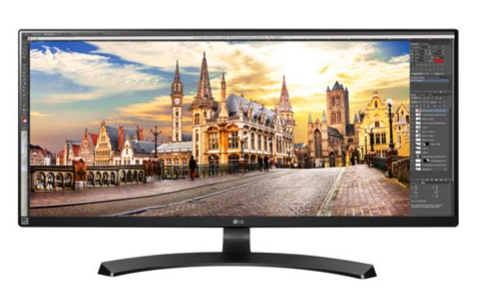
Additionally, not all games support the 21:9 aspect ratio. Therefore, the image might stretch out to fit the bigger screen, or you might experience black bars at the sides. Most of the 34-38-inch monitors feature a curved screen. A curved monitor is advantageous as you can see all the details, including the ones on the ends, without much struggle. You can also get flat models if that's what you prefer.
The ultrawide curved monitors offer you excellent gaming performance. Most come with a 144Hz refresh rate, ensuring you enjoy a smooth gaming experience. The last thing you want during gaming is screen tearing. Most of the monitors have FreeSync support, which syncs the frame rate with your graphics card, thereby preventing screen tearing.
Some models also support the NVIDIA G-Sync, which helps prevent screen tearing (see the comparison of both FreeSync and G-Sync technologies). With the low input lag and faster response time, you can be sure to enjoy smooth gaming. One downside with some of the models in this category is low contrast. The low contrast makes the blacks look gray and may not achieve the brightest whites. Thus, you may not enjoy clear and lifelike images. Additionally, you may have challenges spotting the enemies hiding in the dark corners.
Super Ultrawide Monitors
A super ultrawide gaming monitor is a perfect pick for gaming enthusiasts looking for more screen real estate and would prefer one monitor instead of a multi-monitor setup. The monitors feature a 49-inch screen size similar to having two 27-inch monitors side-by-side. They also feature a 32:9 aspect ratio.
Naturally, larger screens will also offer you higher resolutions, leading to better-quality images. 5120x1440 resolution is common in this category, which delivers the same number of vertical pixels as a 1440p screen but with more horizontal pixels.
Additionally, ultrawide monitors feature a curved screen. The curved screen is an excellent feature as it enables you to see the edges of the screen without much struggle. However, you might experience some uniformity issues with the screen. The large screen also doesn't offer much in terms of ergonomics. The screen takes up a lot of space, and you'll require ample space on your desk to place it.
As mentioned earlier, ultrawide monitors feature a 32:9 aspect ratio. However, not all games support the aspect ratio. The image might have to stretch to fit the big screen, or you may experience some dark bars on the side of the giant screens.
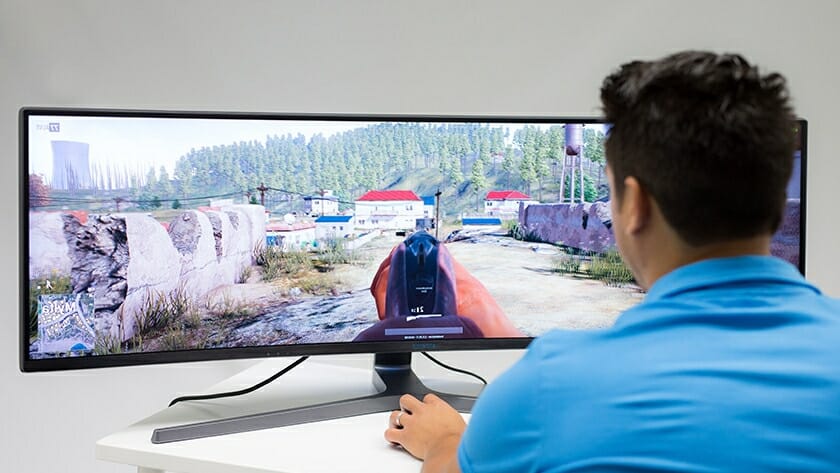
However, the aspect ratio may not be an issue if you open multiple windows side-by-side.
Most of the monitors in this category feature a local dimming feature and LED lighting, making it an ideal choice for gaming in a dark room. You also enjoy high peak brightness and an incredible HDR monitor experience to achieve the best images. With the 240Hz refresh rate, you can be sure to enjoy a smooth gaming experience even when playing fast-paced games.
Large Screen Monitors
Large screen monitors are an excellent choice if the 24, 27, and 32-inch monitors are too small and you consider the 55-inch monitors too big for gaming. Most monitor manufacturers have started releasing large screen monitors in the 40 to 50-inches range.
You can find 43-inch LED options or go for the 48-inch OLED monitors. One advantage of the large screen monitors is that they feature a 16:9 aspect ratio. As such, you won't experience stretched images on the screen or black bars on the sides as you play your games or watch a movie.
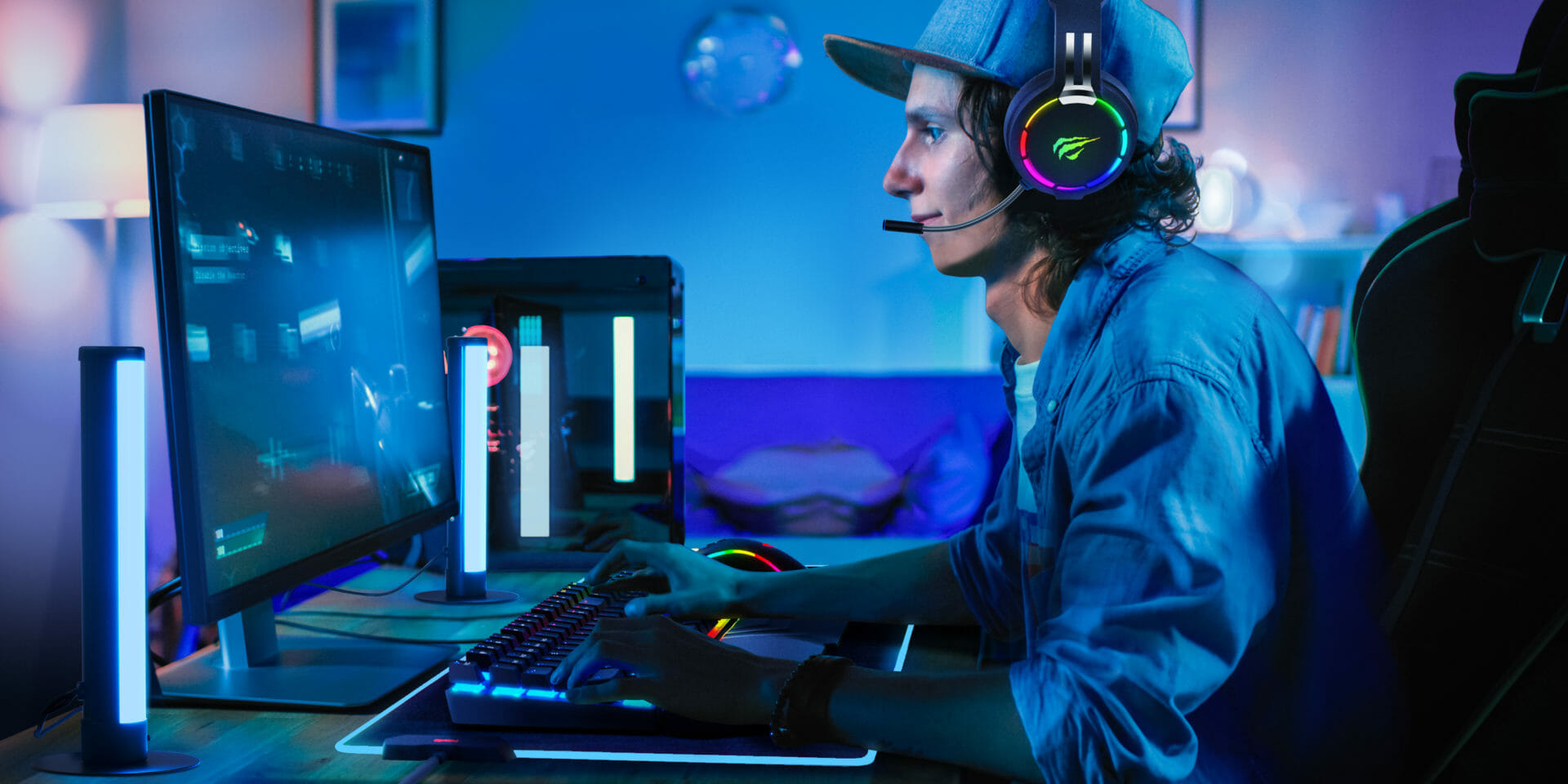
However, the monitors in this category tend to be more expensive, and there aren't many models available in the market, although they are gaining popularity. The monitors also don't offer much ergonomics as they feature fixed stands. As such, they may not be the best choice if you are looking for a portable monitor. It'll be a challenge moving the monitor around to share with other gamers.
Conclusion
Gaming monitors come in different sizes, colors (see white gaming monitors), including small, large, and ultrawide monitors. Each comes with its pros and cons, and your choice of screen size will depend on your preference. For instance, small monitors make it easy to see all the details on the screen without much struggle and offer more pixel density. However, they are not ideal for screen-splitting. On the other hand, large screens provide more display area but don't have much to offer in terms of ergonomics.

